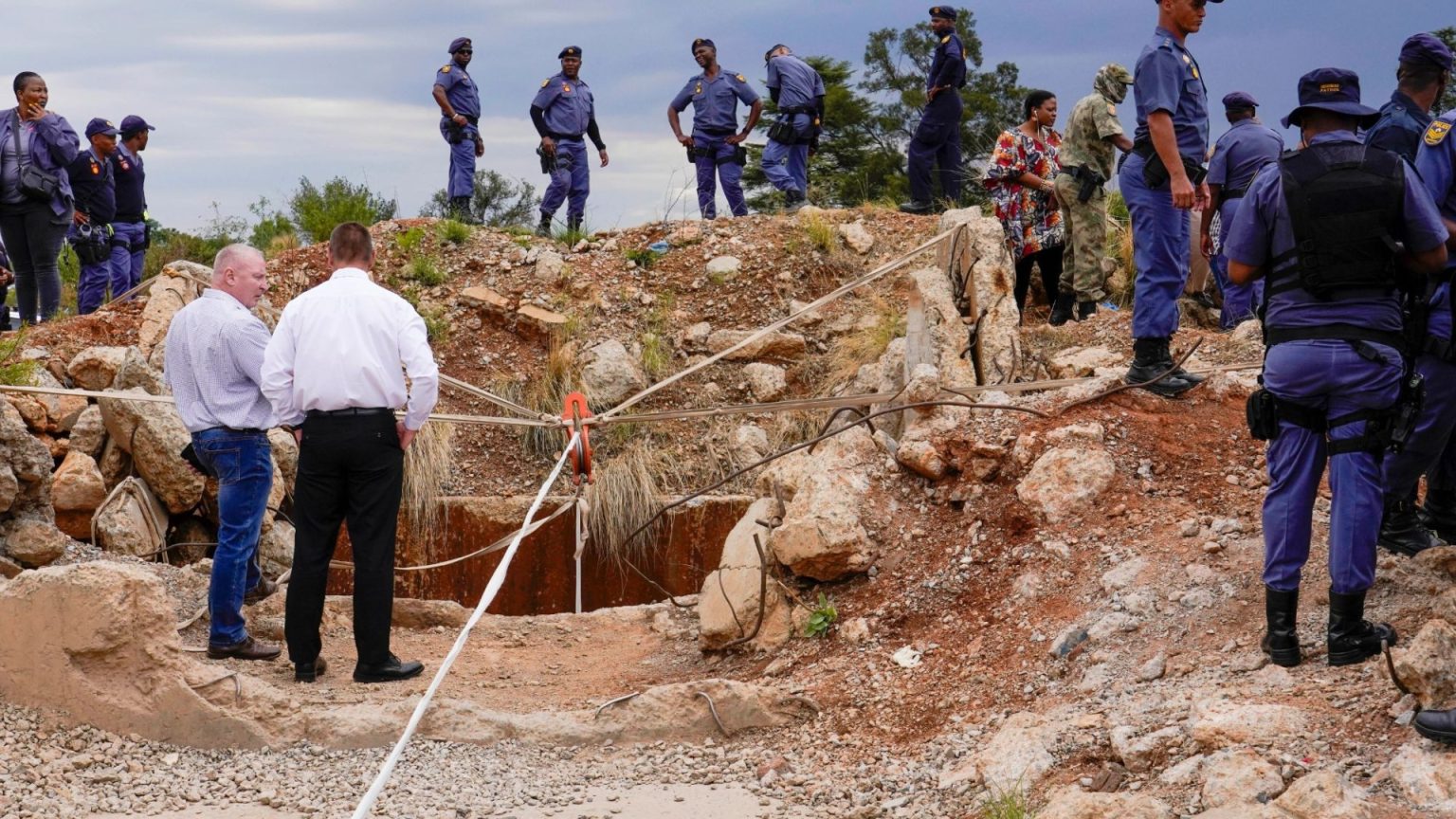The tragedy unfolding in Stilfontein, South Africa, paints a grim picture of the desperate conditions faced by illegal miners, often referred to as “zama zamas.” Over 100 of these miners have perished, trapped for months in the depths of an abandoned gold mine, while an estimated 500 more remain ensnared in the subterranean labyrinth. This dire situation highlights the perilous nature of illegal mining, driven by poverty and lack of opportunity, which forces individuals to risk their lives in pursuit of precious metals within hazardous, unregulated environments. The standoff with authorities, who reportedly cut off essential supplies like food and water in an attempt to force the miners out, further exacerbated the already precarious conditions, ultimately leading to this devastating loss of life.
The Stilfontein mine, like many others across South Africa, has become a magnet for illegal miners, drawn by the promise of gold, even amidst the inherent dangers. These abandoned mines, often lacking proper ventilation and structural integrity, pose significant risks of collapse, gas leaks, and flooding. The lack of safety regulations and oversight within these informal operations leaves miners vulnerable to accidents and health hazards, with little to no recourse in case of injury or death. The sheer number of miners trapped in Stilfontein underscores the scale of this clandestine industry, reflecting the desperation of those willing to gamble their lives for a chance at economic survival.
The decision by law enforcement to restrict access to food and water, effectively attempting to “smoke out” the trapped miners, raises critical ethical questions. While authorities may argue that this tactic was necessary to prevent further illegal activity and ensure the safety of the surrounding community, critics contend that it constitutes a violation of basic human rights. Denying essential resources to individuals, regardless of their legal status, raises concerns about the proportionality of the response and the potential for exacerbating an already volatile situation. The tragic outcome, with over 100 lives lost, underscores the need for a more comprehensive and humane approach to addressing the issue of illegal mining.
Beyond the immediate crisis, the Stilfontein tragedy highlights the broader socio-economic challenges that fuel illegal mining in South Africa. High unemployment rates, coupled with limited access to education and economic opportunities, create a fertile ground for this dangerous practice. Many of these miners are driven by desperation, seeking to provide for their families and escape the cycle of poverty. Addressing the root causes of this issue requires a multi-faceted approach, including job creation, skills development programs, and improved access to social services, in order to provide viable alternatives to the risky allure of illegal mining.
Furthermore, the government must strengthen regulations and enforcement efforts to curb illegal mining activities and improve safety standards within the mining sector as a whole. This includes increased monitoring of abandoned mines, stricter penalties for those involved in illegal operations, and collaboration with mining companies to secure disused sites. Equally important is investing in rehabilitation programs for former illegal miners, offering them support and training to transition into legitimate employment opportunities. A collaborative effort between government, industry, and community organizations is essential to address the complexities of this issue and create a sustainable path forward.
Ultimately, the tragic events in Stilfontein serve as a stark reminder of the human cost of illegal mining and the urgent need for comprehensive solutions. While the immediate focus must be on rescuing the remaining trapped miners and providing support to the affected families, the long-term goal should be to address the underlying socio-economic factors that drive individuals to risk their lives in these dangerous endeavors. This requires a commitment to sustainable development, job creation, and improved access to education and opportunities, in order to break the cycle of poverty and offer a brighter future for vulnerable communities. This tragedy must serve as a catalyst for meaningful change, ensuring that such devastating events are not repeated in the future.











